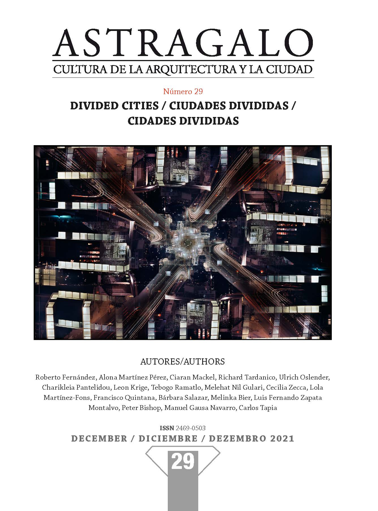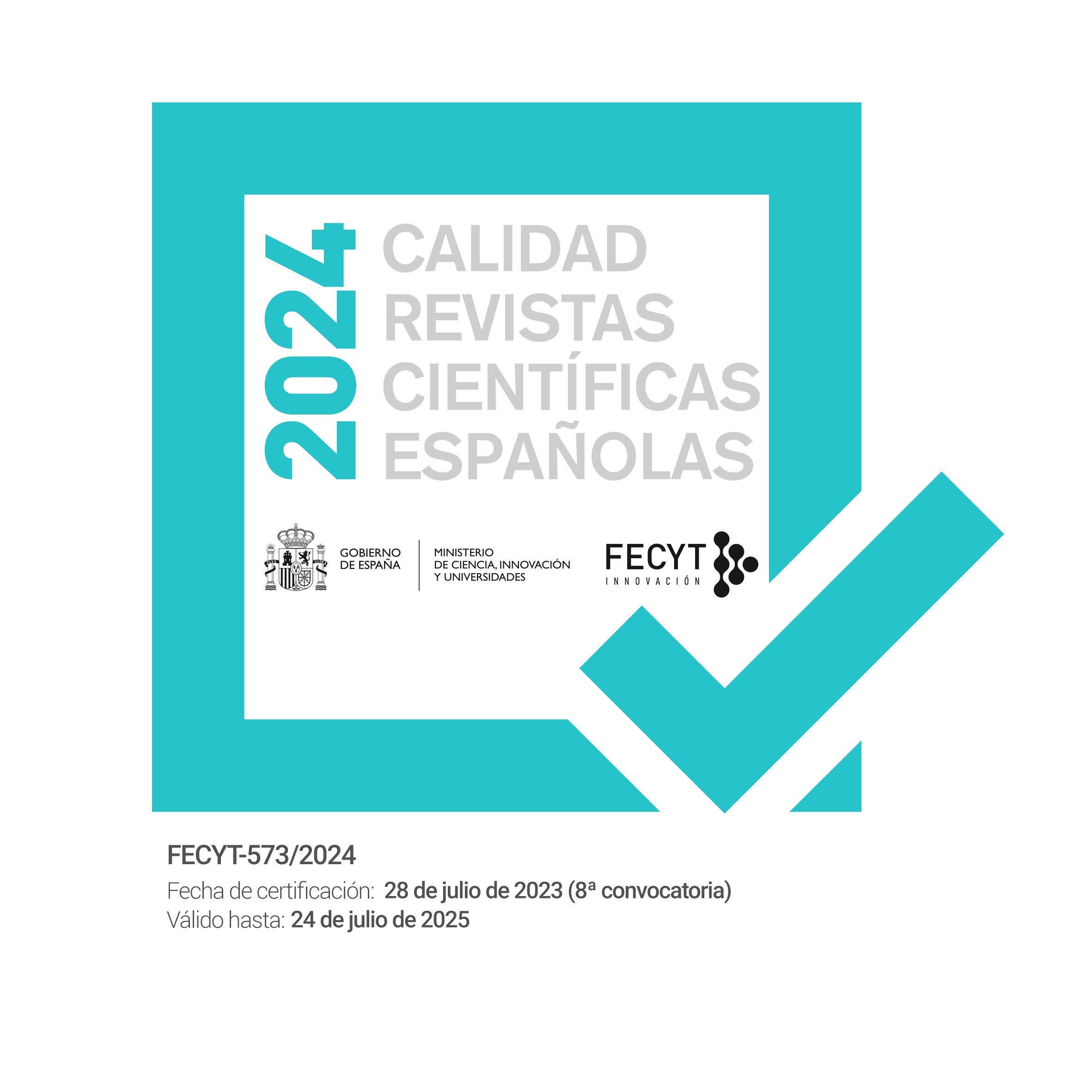Sub-Saharan Africa's informal hybrid city today, caught between the colonial legacy of 'curse' and 'exotification'.
DOI:
https://doi.org/10.12795/astragalo.2021.i29.10Keywords:
Sub-Saharan Africa, colonialism, hybrid city, informal, border thinkingAbstract
The colonialism implemented by the European powers in Sub-Saharan Africa, from the late 19th century until the middle to later 20th century, would fracture its history and its urban territory, leaving a mark that is still visible today in the great regional differences resulting from the macrocephalic organization of the European colonies, and in the urban layouts of some of its cities where racial segregation has given rise to a socioeconomic segregation that is enhanced by colonized thinking and knowledge that resort to European models to conceptualize and codify the city. A codification that the colonizers deployed in their colonial cities in such a way that everything that escaped their understanding and 'ways of doing' city was assigned the code of 'informal'.
These 'informal' urban structures in which Africans were confined would become arenas of social, technical and cultural creation and innovation: hybrid urban forms that integrated western and traditional influences. These hybrid cities build today more than half of the urban fabric in some African countries, they are places of experimentation and learning —border thinking incubators— that, however, remain trapped in an inadequate conceptual framework that materializes spatially and mentally between two extremes: the 'curse' and the 'exotification'.
Downloads
References
Appadurai, Arjun. 2001. “Deep democracy: Urban governmentality and the horizon of politics”. Environment and Urbanization 13(2), 23–42.
Bank, Leslie. 2011. Home spaces, street styles: contested power and identity in South African city. London: Pluto Press.
Brillembourg, Carlos. 2004. “The new slum urbanism of Caracas, invasions and settlements, colonialism, democracy, capitalism and devil worship”. AD: Architectural Design 74(2): 77–81.
Brillembourg, Alfred y Klumpner, Hubert. 2005. “Towards an informal city”. En Informal City: Caracas Case editado por Brillembourg, A, Feireiss, K, Klumpner, H, Munich: Prestel: 38–45.
Castle, Helen (ed). 2004. “Extreme Sites: The ‘greening’ of Brownfield”. AD: Architectural Design 74 (2).
Chakrabarty, Dipesh. 2000. Provincializing Europe: Postcolonial Thought and Historical Difference. Princeton: Princeton University Press.
Clinard, Marshall. 1966. Slums and community development en self-help (New York: The Free Press, 1966), 3. Citado en Obudho y Mhlanga, 1988: 9.
Coquery-Vidrovitch, Catherine. 2005. “Residential segregation in African cities”. Urbanization and African cultures, editado por Toyin Falola y Steven J. Salm: 343-356. Durham, NC: Carolina Academic Press.
Davis, Mike. 2006. Planet of slums, London: Verso.
Davidson, Basil. 1970 [1959]. The lost cities of Africa. Boston: Atlantic-Little-Brown Books.
De Soto, Hernando. 2000. El misterio del capital. Lima. El Comercio.
Demissie, Fassil (ed.). 2012. Colonial architecture and colonialism in Africa. Intertwined and contested histories. Surrey: Ashgate Publising Limited.
Fabricius, Daniela. 2008. Resisting representation: “The informal geographies of Rio de Janeiro”. Harvard Design Magazine 28 (spring/summer): 4–17.
Falola, Toyin y Salm, Steven J. (ed). 2005. Urbanization and African cultures. Durham, NC: Carolina Academic Press.
Frenzel, Fabian. 2013. “Slum tourism in the context of tourism and poverty (releaf) debate”. Die Erde; Zeitschift der Gesellschaft für Erdkunden zu Berlin 144(2): 117-128.
Gandy, Mathew. Junio 2005. “Amorphous urbanism: chaos and complexity in metropolition Lagos”. Paper presented to the conference on African urbanism held at the Open University, November 2004 (Published in New Left Review 33 8Ma): 1-2.
Gans, Deborah y Weisz, Claire. 2004. “Introduction”. The ‘greening’ of Brownfield. AD: Architectural Design 74 (2): 5-6.
Hansen, Karen y Vaa, Mariken. 2004. Reconsidering informality: perspectives from urban Africa. Uppsala: Nordiska Afrikainstitutet.
Harrison, Philip. 2006. “On the edge of reason: planning and urban futures in Africa”. Urban Studies, VOL.43, N 2: 319-335.
Harvey, David. 2003. The new imperialism. Oxford: Oxford University Press.
Hernández, Felipe. 2010. Bhabha for architects. London: Routledge.
Hull, Richard H. 1976. African cities and towns before the European conquest. Toronto: Norton & Company.
King, Anthony. 1990. Urbanism, colonialism and the world-economy. London: Routledge.
Kipré. Pierre. 1985. Villes de Côte d’Ivoire 1893-1940, Abidjan: Nouvelles Editions Africaines.
Mbembe, Achille. 2001. On the Postcolony. Berkeley: University of California Press.
Mbembe, Achille y Nuttall, Sarah. 2004. “Writing the world from an African metropolis”. Public Culture, 16 (3): 347-372.
Mitchell, Timothy. 1988. Colonizing Egypt. Cambridge: Cambridge University Press.
Murray, Martin. 2009. “Fire and ice: unnatural disasters and the disposable urban poor in post-aparheid Johhanesburg”. Internationa Urban and Regional Research, 33(1): 165-192.
Myers, Garth A. 2003. Verandahs of power. New Yok: Syracusa University Press.
Myers, Garth. 2011. African cities. Alternative visions of urban theory and practice. London: Zed Books.
Nunes Silva, Carlos. 2015. Urban planning in Sub-saharan Africa. New York: Routledge.
Obudho, Robert A y Mhlanga, Constance C. (ed). 1988. Slum and squatter settlements in Sub-Saharan Africa, New York: Praeger Publishers.
Pieterse, Edgar. 2011. “Grasping the unknowable: coming to grips with African urbanis”. Social Dynamics, 37(1): 5-23.
Rao, Vyjayanthi. 2006. “Slum as a theory. The South/Asian city and globalization”. International Journal of Urban and Regional Research 30(1): 225 – 232.
Rice, Xine. Septiembre 2009. Kenya’s slums attract poverty tourism. The Guardian. Disponible en https://www.theguardian.com/world/2009/sep/25/slum-tourism-kenya-kibera-poverty. Acceso en octubre de 2021.
Robinson, Jennifer. 2002. “Global and world cities: a view from off the map”. International Journal of Urban and Regional Research 26.3: 531-554.
Robinson, Jennifer. 2006. Ordinary cities: Between Modernity and Development, London: Routledge.
Roy, Ananya. 2005. “Urban informality: Toward an epistemology of planning”. Journal of the American Planning Association 71: 147–158.
Shinnie, Margaret. 1965. Ancient African Kingdoms. New York: San Martin’s Press.
Simone, AbdouMalique. 2004. For the city yet to come. Changin African life in four cities, Durham y London: Duke University Press.
Southall, Aidan. 1998. The city in time and space. Cambridge: Cambridge University Press.
Taylor, Charles. 2006. Imaginarios sociales modernos, Barcelona: Paidos.
Watson, Vanessa. 2013. “African urban fantasies: dreams or nightmares?”. Environment and Urbanization, Vol 26(1): 215-231.
Yiftachel. Oren. 2009. “Theoretical notes on ‘gray citis’: the coming of urban aprtheid?”. Planning Theory, 8: 88-100.
Downloads
Published
How to Cite
Issue
Section
License
Copyright (c) 2021 Lola Martínez-Fons

This work is licensed under a Creative Commons Attribution-NonCommercial-ShareAlike 4.0 International License.


















